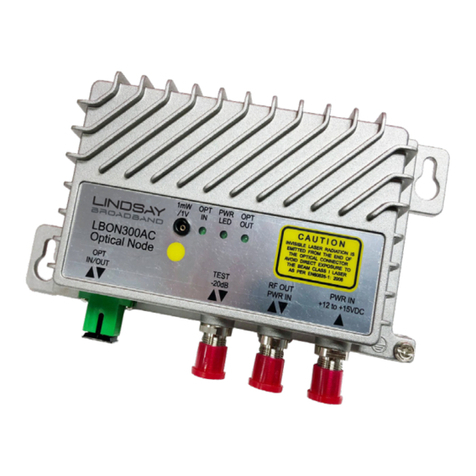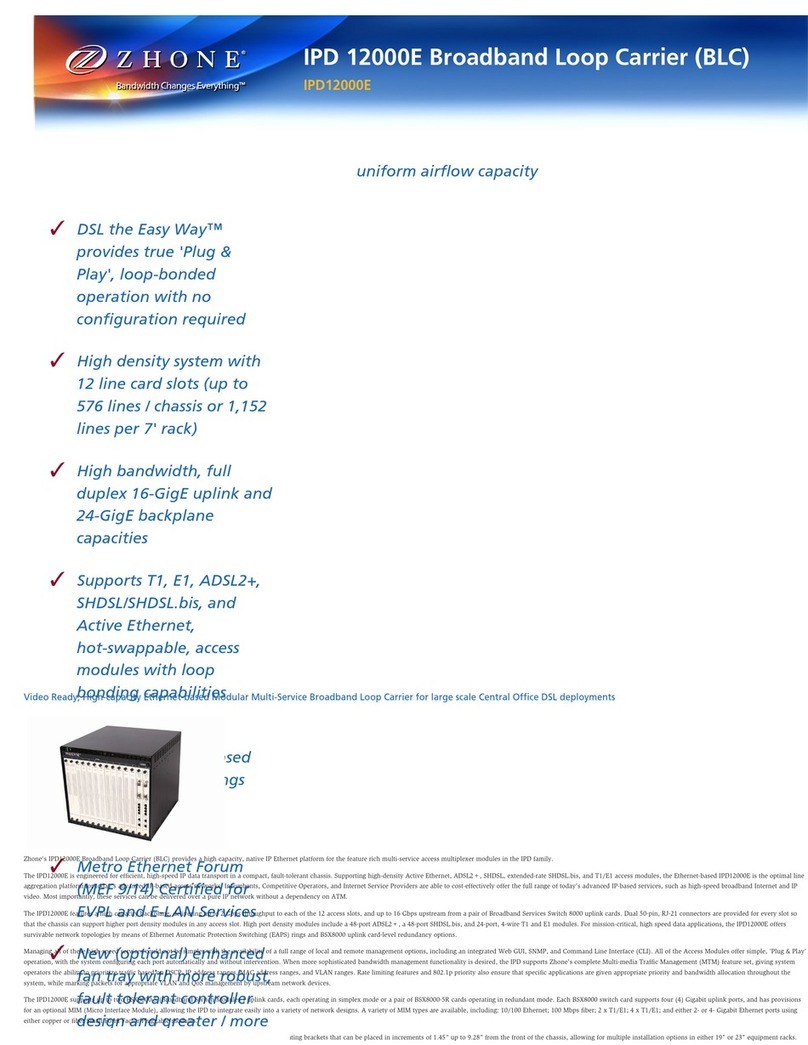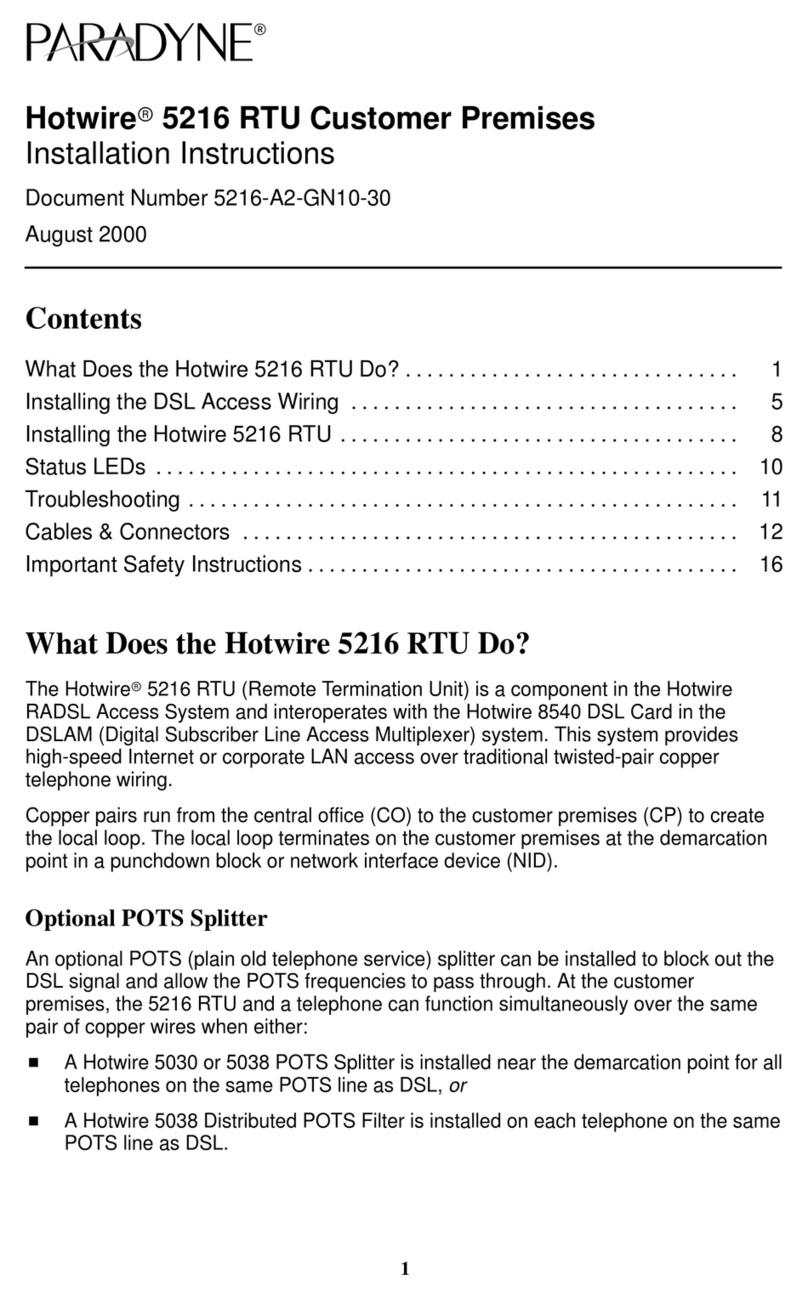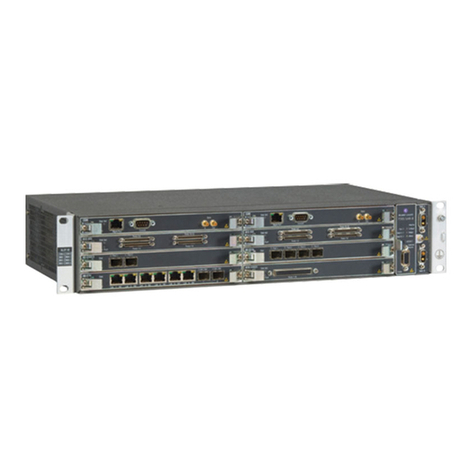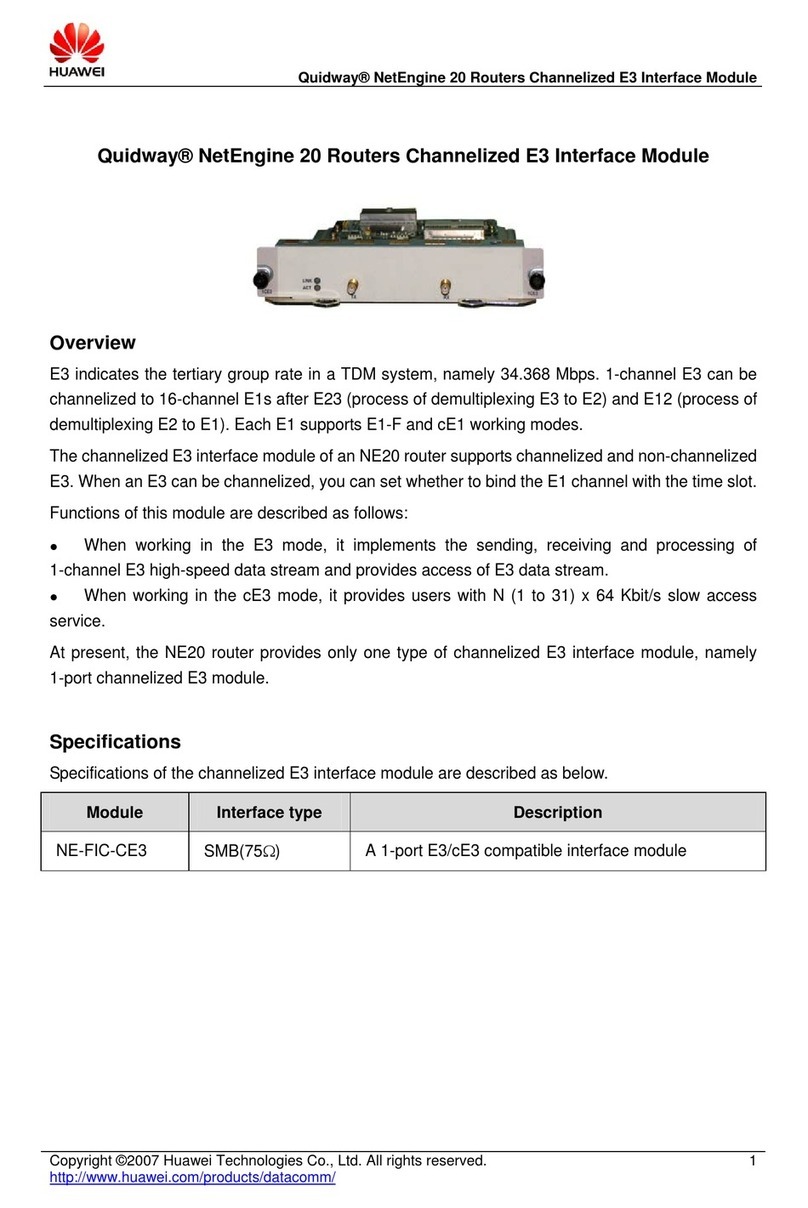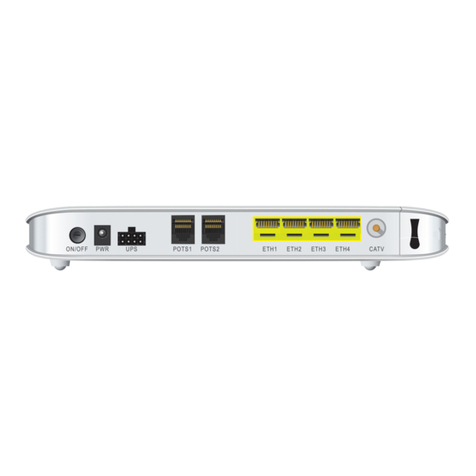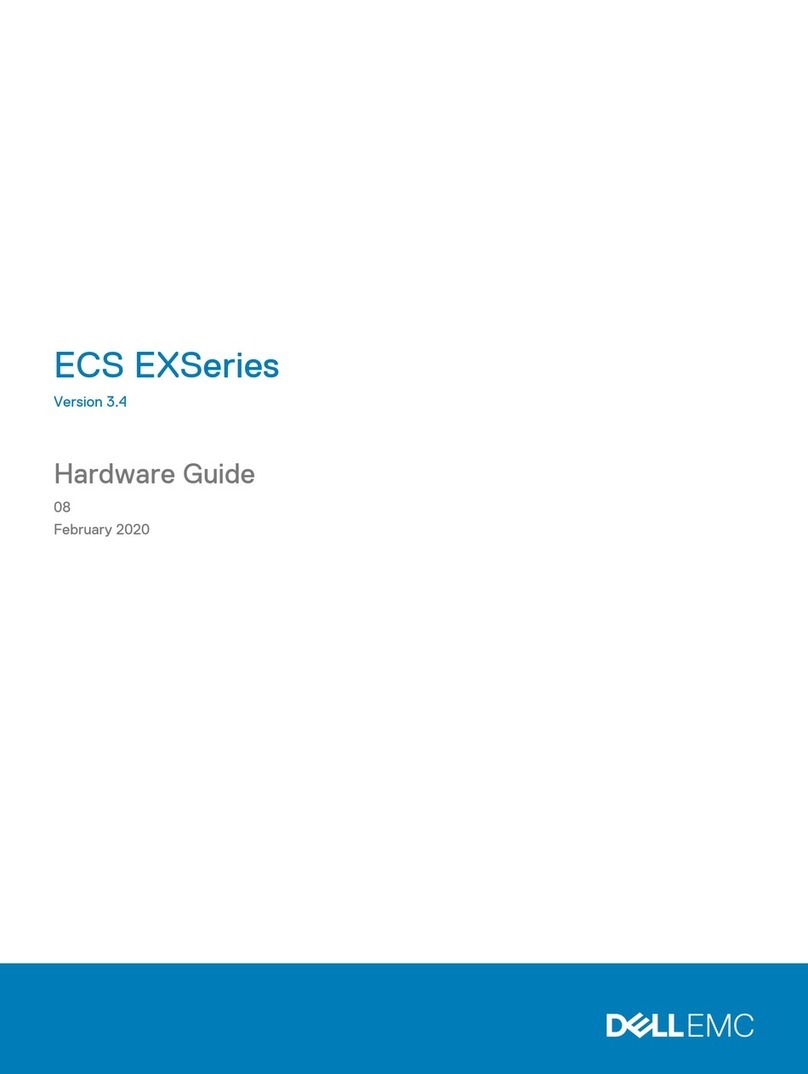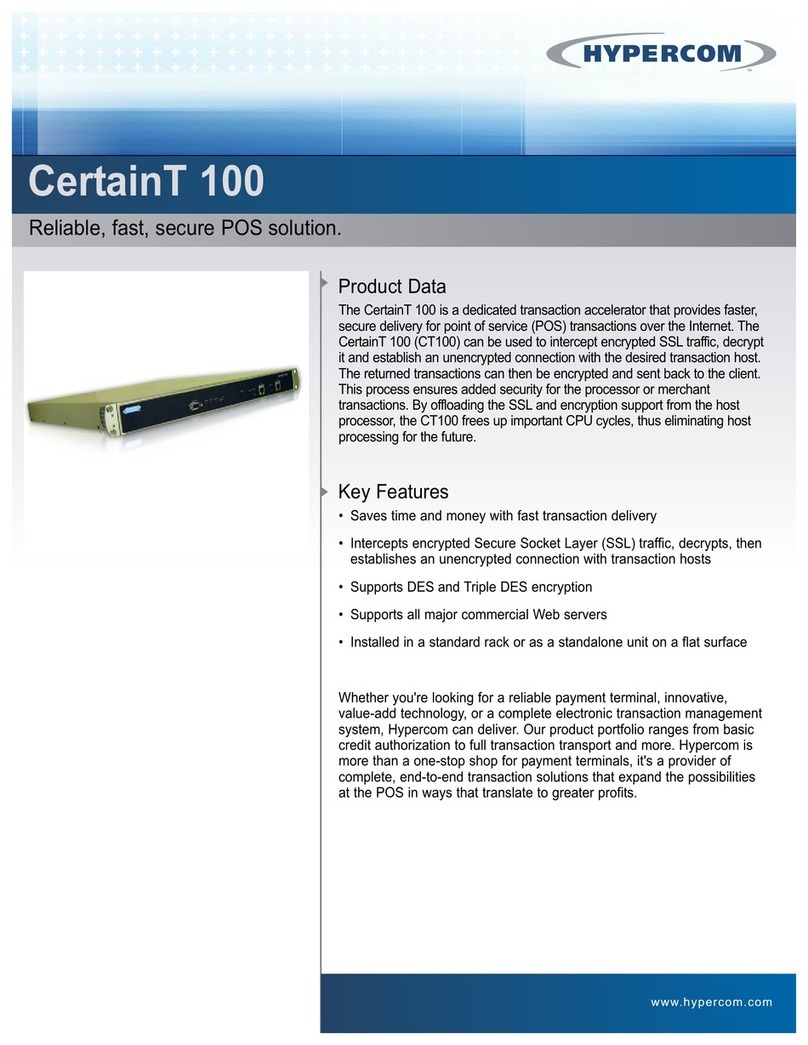Lindsay Broadband LBON320AC Series User manual

LBON320AC Series 1.2 GHz Customer Premise RFoG ONU
Installation & Operation Manual
Page 1 of 4
Lindsay's RFoG product family includes several optical network units (ONUs). The LBON320AC device is a 1218 MHz, DOCSIS®3.1, compact, bi-directional optical
node that provides the ideal platform for delivering upstream and downstream DOCSIS®, voice, video and high-speed data services over FTTx applications. The
LBON320AC ONU includes Automatic Gain Control (AGC), burst-mode return lasers, and optional bandwidth splits.
FEATURES
•Input Optical Wavelength: 1550 nm
•Optical AGC: -6 to +2 dBm
•Thermally stable DFB burst-mode laser
•Transmit Wavelengths: 1310 nm, 1610 nm or CWDM
•Downstream Bandwidth: 54/85/102/256 MHz to 1218 MHz
•Upstream Bandwidth: 5 MHz to 42/65/85/204 MHz
•Output RF Level: 20 dBmV/CH (typ.)
•Total RF Input Level: 20-40 dBmV
•RF Bi-directional Test Point: -20 dB
•Supply Voltage: 12-15 VDC
•Pwr-On, Opt I/P, Opt TX LED indicators
•Optional UPS available
PRODUCT OVERVIEW
•Model: LBON320AC
•Bandwidth: 5-42 MHz/54-1218 MHz; 5-65 MHz/85-1218 MHz; 5-85 MHz/102-1218 MHz; 5-204 MHz/256-1218 MHz
•Powering: 12-15 VDC
FUNCTIONAL SCHEMATIC
CAUTION
Risk of electric shock. Do not open.
No serviceable parts inside. Refer servicing to qualified service personnel.
Invisible laser radiation! Avoid eye injury. Never look into the optical cable or connector.
SPECIFICATIONS
Parameter Specifications
Min Typ Max
Forward Receiver
Optical Receive Wavelength 1540-1565 nm
Monitor Voltage 1 V/mW
Optical Input Power -6 to +2 dBm
Frequency Range
(1)
54-1218 MHz
Flatness of Frequency Response f = fmin-1218 MHz ± 1 dB
Output Return Loss f = fmin-1218 MHz 16 dB
Reference Output Level @ 1000 MHz (± 2 dB) 20 dBmV
Slope ± 1 dB 6 dB
Optical Input Return Loss 45 dB
C/N
(2)
50 dB 51 dB
CTB
(2)
-65 dB
CSO
(2)
-60 dB

LBON320AC Series 1.2 GHz Customer Premise RFoG ONU Installation & Operation Manual
Page 2 of 4
OPTICAL, RF & POWER CONNECTIONS
1. The powering port and all RF ports are standard F-type coaxial connectors. The optical connector is a SC/APC female-type.
2. The LBON320AC can be powered with 12-15 VDC. It is recommended to power the LBON320AC using a 500 mA rated power pack at 12 VDC or 15 VDC output.
3. Connect a coaxial cable from the output of the power pack to the PWR IN port on the LBON320AC.
4. The LBON320AC can also be powered from the RF OUT/PWR IN port by combining RF and power via a power inserter.
5. After connecting the coaxial cable between the power pack output and the LBON320AC, plug the power pack into the wall receptacle.
6. When the LBON320AC powers up, the PWR LED will illuminate.
7. Connect the LBON320AC chassis to physical earth (ground) by using the grounding screw on the LBON320AC.
8. The LBON320AC accepts optical input of 1550 ± 10 nm and optical levels from -6 dBm to +2 dBm. Using an optical power meter, make sure the optical level on the
incoming fiber is within range.
9. Make sure the optical cable is matched for the proper connector (ie. SC/APC to SC/APC). After cleaning all optical connectors, connect the optical fiber to the OPT
IN/OUT port on the ONU.
10. If the optical power is within range, the OPT IN LED will illuminate. Once the optical fiber is connected to the ONU, the 1 mW/1 VDC test point (TP) can be used to
measure the optical input detected by the forward receiver in the ONU. Use a digital multimeter on DC voltage setting and measure between 1 mW/1V TP and the
grounding screw. See table below for relation between measured DC voltage on 1 mW/1V TP and optical power received by the RFoG ONU.
V (DC) on 1 mW/1 VDC
Test Point of ONU
Optical Level Hitting
the RX (mW)
Optical Level Hitting
the RX (dBm)
OPT IN
LED
1.58 1.58 2
ON
(1)
1.26 1.26 1
1.00 1.00 0
0.79 0.79 -1
0.63 0.63 -2
0.50 0.50 -3
0.40 0.40 -4
0.32 0.32 -5
0.25 0.25 -6
0.20 0.20 -7
ON
(2)
0.16 0.16 -8
0.13 0.13 -9
0.10 0.10 -10
< -10 OFF
(3)
NOTES:
(1) Optical AGC
(2) No optical AGC
(3) Out of limit
SPECIFICATIONS CONT'D.
Parameter Specifications
Min Typ Max
Return Transmitter
Optical Wavelength 1310 nm, 1610 nm or CWDM
Optical Output Power 2 mW 3 mW
RF Input Level Total power 20-40 dBmV
Dynamic Input Range
(3)
18 dB
Frequency Range (optional) 5 MHz 42 MHz
Flatness of Frequency Response f = 5-42 MHz ± 0.75 dB ± 1 dB
Input Return Loss f = 5-42 MHz 16 dB
Optical Output Return Loss 45 dB
Laser ON ± 1.5 dB 15 dBmV
Laser OFF ± 1.5 dB -4 dBmV
Power, Environmental & Physical
Total Power Consumption 15 VDC power pack ≤ 4.2 W
Operating Humidity 5-95%, non-condensing
Operating Temperature -40°C to +65°C (-40°F to +149°F)
Dimensions (H x W x D) 4.1”H x 6.7”W x 1.5”D (10.4H x 17.0W x 3.9D cm)
Weight 0.3 kg (0.7 lb)
NOTES:
(1) Other diplex splits available: 65/85 MHz, 85/102 MHz & 204/256 MHz
(2) -1 dBm optical input; 3.5% OMI/CH; 54-550 MHz analog channels & digital compressed channels above 550-1218
MHz at levels 6 dB below equivalent video
(3) NPR at 30 dB. Measured using a receiver with an equivalent input noise (EIN) of <2.5 pA/Hz0.5 with a link budget
of 23 dB (20 km fiber + passive loss). NPR test performed with 37 MHz noise loading

LBON320AC Series 1.2 GHz Customer Premise RFoG ONU Installation & Operation Manual
Page 3 of 4
OPTICAL, RF & POWER CONNECTIONS CONT'D.
FORWARD & REVERSE SETUP GUIDELINES
1. Please note that there are no controls or adjustments on the LBON320AC. Do not open the lid. Opening the lid will void the warranty.
2. For the forward path setup, make sure that the forward optical input level to the LBON320AC is within range as shown in the table in section OPTICAL, RF &
POWER CONNECTIONS above. If the optical input is higher than +2 dBm, receiver overload may occur. If the optical input is < -6 dBm, the LBON320AC loses
AGC tracking, RF output will not be as per specification, and the output will drop a further 2 dB with every 1 dB drop in optical input. The LBON320AC delivers
optimum performance at -1 dBm optical input level.
3. The specified RF output levels are only guaranteed within optical AGC range and with OMI ≥ 3.5% on the 1550 nm downstream optical signal. To compensate for
RF cable losses, there is a 6 ± 1 dB slope on the RF output of LBON320AC from low frequency to high frequency.
4. Connect a signal level meter at the RF OUT port to measure the RF output from the LBON320AC. You can also use the -20 dB TP to measure the RF output.
5. Verify the RF output levels from the LBON320AC are as expected.
6. This completes the forward path setup for the LBON320AC RFoG ONU.
7. For the reverse path setup, make sure that the reverse input level to the LBON320AC is not too high or damage to the ONU may occur. The -20 dB TP is a
bi-directional test point and can also be used to inject the upstream test carrier. Compensate 20 dB if using the test point to inject the upstream test carrier.
8. The upstream transmitter in the LBON320AC is a burst-mode transmitter and will only be activated if the RF input to the LBON320AC is within the upstream
frequency range (5-42 MHz or 5-85 MHz) and is higher than 15 dBmV ± 1 dB. When the transmitter is activated, the OPT OUT LED on the LBON320AC is
illuminated.
9. The upstream RF input range for the LBON320AC is 15-35 dBmV per channel (digital channel level) for the 42/54 MHz LBON320AC, and 15-33 dBmV per
channel (digital channel level) for the 85/102 MHz LBON320AC. These upstream levels are assumed with the condition that a 42/54 MHz split unit will have 4
equally loaded channels in the upstream band, and the 85/102 MHz split will have 8 equally loaded channels in the upstream band. If using a different number of
channels from what is mentioned above, compensate for total RF power. The total RF input level to the LBON320AC (for all channels combined) should not exceed
more than 40 dBmV (digital channel level). More than 40 dBmV (digital channel level) total upstream RF input may cause laser clipping and saturation on the
LBON320AC. Use the following formula to calculate total RF power: Total RF power = RF power per channel + [10* log (# of channels)].
10. Refer to the NPR plot below to better understand the RF input levels to the LBON320AC.
11. For optimum performance in the upstream direction, make sure the LBON320AC is operated with RF input levels to the left side of the NPR peak. Operating at
RF input levels to the left side of the NPR peak will provide the best MER/BER performance while assuring the laser saturation and clipping does not occur on the
RFoG ONU transmitter.
12. This completes the reverse path setup for the LBON320AC RFoG ONU.
13. If you have any more questions regarding the LBON320AC setup, please contact Lindsay Broadband for support.
NOTE: The RF levels mentioned in this manual are analog channel levels, unless specified. For digital channels assume 6 dB less to that of
analog channels.
11. The F-port labelled “RF OUT” is the bi-directional RF input and output port for the LBON320AC RFoG ONU.
12. The “TEST -20 dB” port is a bi-directional -20 dB TP that can be used to test RF input and output levels. When not in use, please terminate this -20 dB TP with a 75
ohm terminator.
13. When using the -20 dB TP to measure the RF input/output levels, make sure the RF OUT port is terminated to 75 ohm. Please note the levels from -20 dB TP will
be 20 dB lower than the RF OUT port.
COMPLETING THE INSTALLATION
1. Record the input and output levels for the station in both upstream and downstream for reference.
2. Make sure the cables are routed properly and all connections are secured.
3. Ensure the optical fiber cable is not pinched and does not have sharp bends.
TROUBLESHOOTING GUIDELINES
1. No Power on the LBON320AC ONU.
a. Check the powering coaxial cable and connections for intermittent connections.
b. Check the output of the power adapter for proper DC voltage (12-15 VDC). It is normal for a linear power pack to have more than 15 VDC output when
unloaded. It should not be more than 20 VDC when unloaded. When the LBON320AC is connected to this unloaded power pack, the output voltage will drop
within 12-15 VDC specification.
c. Check with a different 12 VDC or 15 VDC power pack that is at least rated for more than 500 mA.
d. Try powering via the RF OUT/PWR IN port using a power inserter.

LBON320AC Series 1.2 GHz Customer Premise RFoG ONU Installation & Operation Manual
TROUBLESHOOTING GUIDELINES CONT'D.
2. Low or no downstream RF output level.
a. Verify the optical receive level on the LBON320AC is within range (-6 dBm to +2 dBm, 3.5% OMI level and 1540-1565 nm).
b. Using a fiber inspection scope, check the optical connector and adapter. Make sure the optical connection is clean.
c. If the optical input is within range, the OPT IN LED will be illuminated. Verify that the OPT IN LED is illuminated. Use a DC voltage meter to measure the 1
mW/ 1V TP on the ONU. Refer to step #10 and table under the OPTICAL, RF & POWER CONNECTIONS section of this manual.
d. Check for intermittent connections or pinched fibers.
3. Low or no upstream transmit level.
a. Verify the upstream RF input level is within the LBON320AC upstream frequency range (5-42 MHz or 5-85 MHz) and higher than 15 dBmV ± 1 dB.
b. Use a CW carrier for injection to keep the transmit laser ON.
c. Inject either from the RF OUT port or using the bi-directional -20 dB TP. Make sure to compensate 20 dB if using the -20 dB TP to inject carrier.
d. If the upstream RF input is within RF input range, then the OPT OUT LED will illuminate. Verify the OPT OUT LED is ON.
e. When the OPT OUT LED is ON, connect an optical power meter to the OPT IN/OUT port. Using the optical power meter at the proper upstream wavelength,
verify the optical output of the LBON320AC directly from OPT IN/OUT port is ≥ 2.7 dBm.
f. Check for intermittent connections.
4. If the problem is still not solved, replace, and try with another ONU.
5. If the problem still exists, contact Lindsay Broadband for support. Do not open the LBON320AC as it will void the warranty.
2-2035 Fisher Dr, Peterborough, ON K9J 6X6 Canada
+1.705.742.1350 • 1.800.465.7046 • support@lindsaybb.com • lindsaybb.com
© 2021 Lindsay Broadband Inc. All rights reserved. Printed in Canada. Non-Lindsay Broadband product marks,
service marks, and company names in this document are the property of their respective owners. All information is subject to change without notice.
Rev. 05/21 (LBB0360) • Page 4 of 4
ORDERING INFORMATION
Fwd Total Return Laser TX Optical TX Sub-Split Power
Output Level Input Power Type Power Connector Wavelength Adaptor
LBON320AC -xx xx -D-x-xx -xx -xx -xx
20 = 20 dBmV 25 = 25 dBmV D = DFB 2 = 2 mW SA = SC/APC 31 = 1310 nm 45 = 42/54 00 = None
36 = 36 dBmV 30 = 30 dBmV 3 = 3 mW 61 = 1610 nm 68 = 65/85 01 = N. America
xx = CWDM 81 = 85/102 02 = Europe
22 = 204/256
LBON320AC
(front angled view)
This manual suits for next models
1
Other Lindsay Broadband Network Hardware manuals
Popular Network Hardware manuals by other brands

ZyXEL Communications
ZyXEL Communications Prestige 971M user guide
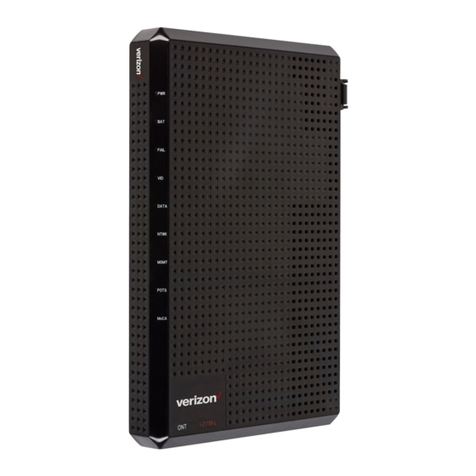
Nokia
Nokia G-211M-C Quick reference guide
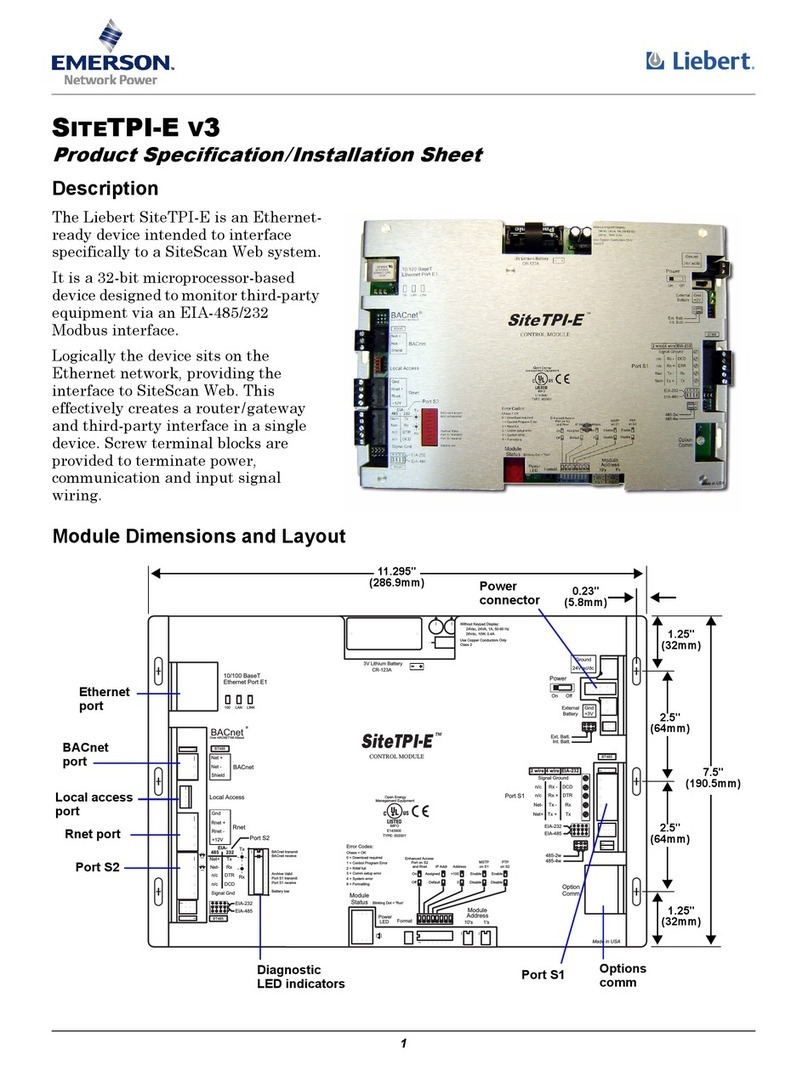
Emerson
Emerson SITETPI-E V3 Product specification/installation sheet
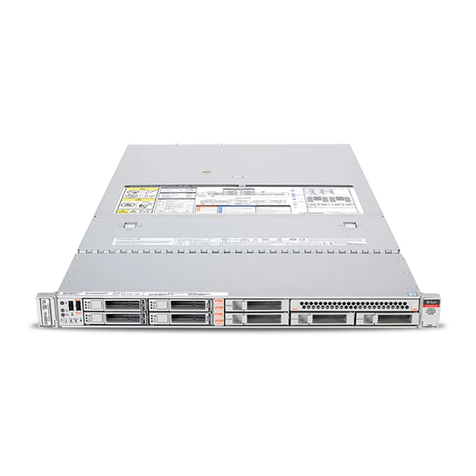
Oracle
Oracle Database Appliance X6-2-HA owner's guide
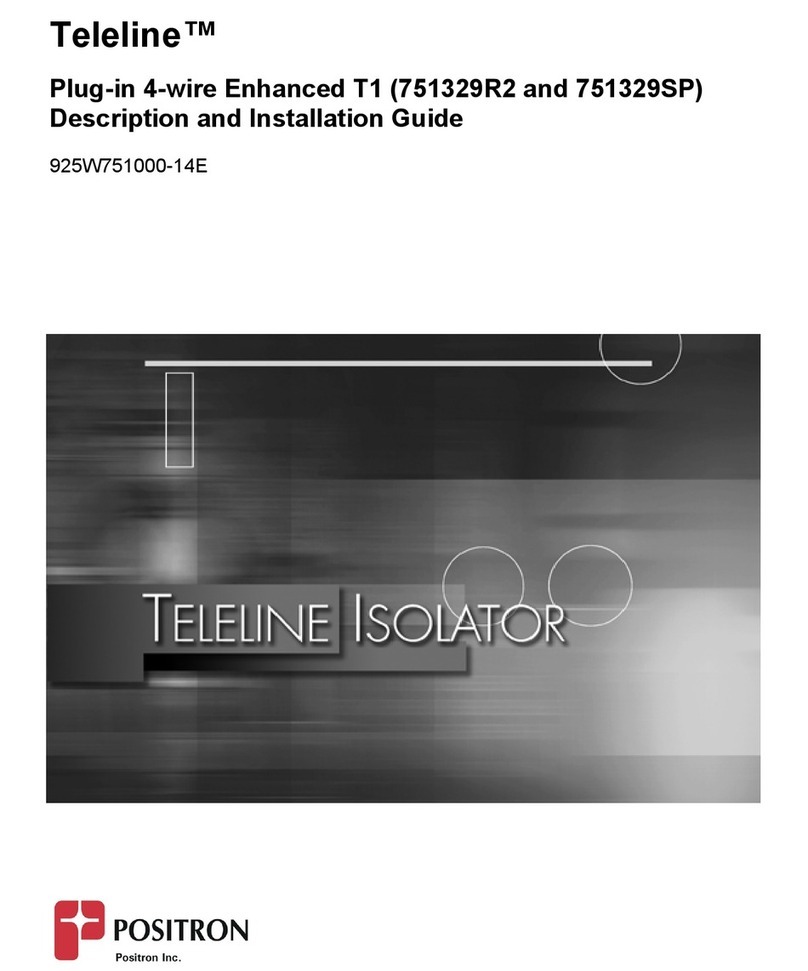
Positron
Positron Teleline Enhanced T1 General description and installation guide

RR-CirKits
RR-CirKits LocoBuffer-USB Rev-N installation guide


